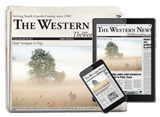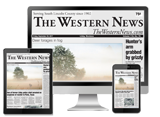Feds approve Montana’s plan to expand broadband access
The federal government approved Montana’s plan to address disparities in broadband access – which opens up the state to compete for more federal funding to bridge the digital divide.
The National Telecommunications and Information Administration on Tuesday approved the state’s plan to expand digital access, skills and affordability as part of the federal $2.75 billion Digital Equity Act.
Montana’s Digital Opportunity Plan listed barriers to digital access, which include broadband availability, service affordability, device access, and digital skills – with access and affordability being the top two.
Become a Subscriber!
You have read all of your free articles this month. Select a plan below to start your subscription today.
Already a subscriber? Login


